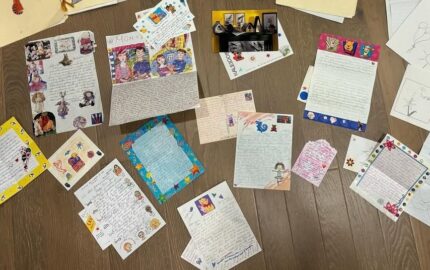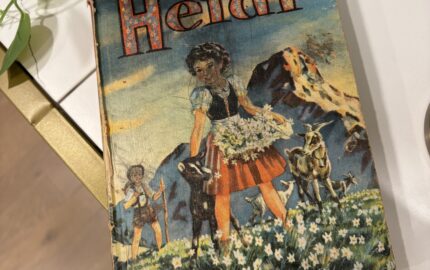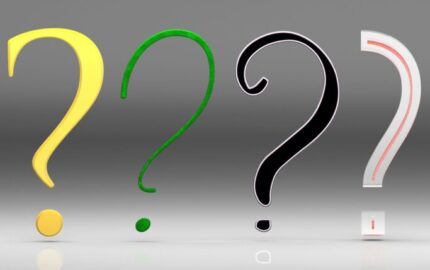The new student of multimedia narrative may want to bookmark an archive on digital storytelling by Mark Berkey-Gerard, who teaches online journalism at Rowan University, in New Jersey. A Columbia Graduate School of Journalism alum who has won awards for innovative teaching, Berkey-Gerard logged resources and learning tools on a site called Campfire Journalism: Notes on Digital Storytelling. He wrote:
We of course like that Berkey-Gerard’s required reading included our sister publication, Nieman Journalism Lab. But there are other reasons to check out the archive: field-gear checklists, a tutorials clearinghouse, breakdowns of multimedia structure. “I don’t know what the future of journalism holds,” Berkey-Gerard once said, “but I think that versatility is key.”
Five posts worth your time:
“The Building Blocks of a Multimedia Story.” Excerpt:
Editor's note: If you’ve never seen Glass’s how-to-tell-a-story video, treat yourself to his four-part tutorial. Here's Part 1:
And from a passage on finding the narrative arc of a story:
“Three Resources for Exploring the Narrative Structures of Digital Journalism.” Excerpt:
 "Using Narrative Nonfiction to Teach Multimedia Storytelling." Berkey-Gerard used bestselling author, New Yorker writer and former Nieman Fellow Susan Orlean — and her book Saturday Night — as a way to explore issues such as story conception, the reporting process and structure:
"Using Narrative Nonfiction to Teach Multimedia Storytelling." Berkey-Gerard used bestselling author, New Yorker writer and former Nieman Fellow Susan Orlean — and her book Saturday Night — as a way to explore issues such as story conception, the reporting process and structure:
“Multimedia Journalism Tutorials.” This one was posted in 2010, and while some content has been updated, in other ways it’s very much a document of its time. Here’s some of what you’ll find:
“A Multimedia Storytelling Lexicon.” Excerpt:
The title comes from the writings of educator James Carey, who thought of journalism as a kind of collective campfire storytelling that begins in conversation. “Conversation not only forms opinions, it forms memory,” Carey wrote. “We remember best the things that we say, the things the we say in response to someone else with whom we are engaged. Talk is the surest guide to remembering and knowing what we think.”
We of course like that Berkey-Gerard’s required reading included our sister publication, Nieman Journalism Lab. But there are other reasons to check out the archive: field-gear checklists, a tutorials clearinghouse, breakdowns of multimedia structure. “I don’t know what the future of journalism holds,” Berkey-Gerard once said, “but I think that versatility is key.”
Five posts worth your time:
“The Building Blocks of a Multimedia Story.” Excerpt:
You have pages of notes, hundreds of photos, and hours of audio and video. Now what?
Turning raw material into a cohesive and compelling story is the main challenge for a multimedia journalist. Often we have a sense that there is a story buried in there somewhere if we can just locate the essential elements and fashion them in narrative. …
Here is some simple, yet effective, advice on how to structure a story from three storytellers and educators:
Ira Glass, the producer of the radio and television documentary show This American Life, says that every great audio or video story has two elements: an anecdote and a moment of reflection.
An anecdote is the sequence of actions that builds the momentum and raises questions to be answered. Stringing together a series of actions (this happens, and then this happens) makes the audience feel that they are moving toward a destination.
A moment of reflection is the point when someone clearly says, “here is the point of the story.”
Often a reporter will have one of the two elements, Glass says, but both are needed:
Your job to be ruthless and to understand that either you don’t have a sequence of actions that works or you don’t have a moment of reflection. And you are going to need both. In a good story you are going to flip back between the two… and that is the trick of the whole thing is to have the perseverance that if you have an interesting anecdote that you also can end up with an interesting moment of reflection that can support it…and that together it will add up to something that is more than the sum of its parts.
Editor's note: If you’ve never seen Glass’s how-to-tell-a-story video, treat yourself to his four-part tutorial. Here's Part 1:
And from a passage on finding the narrative arc of a story:
Like a feature film or a book of fiction, a short piece of multimedia journalism can still have a story arc with a clear beginning, middle and end.
Mindy McAdams, who teaches online journalism at the University of Florida, says that the first question a reporter should ask when creating a multimedia piece like an audio slide show is “what do you intend to communicate?” ... Once the reporter knows what she wants to communicate with the story, McAdams suggests finding the opening and closing of the story. A strong and clear beginning is essential to hook the audience. Then a piece should make a direct track toward the conclusion with the ending clearly in mind.
On endings, McAdams writes:
A solid, satisfying ending has two parts. They can be called the climax and the resolution, and even though that sounds a bit overblown for a two-minute story. I think you’ll tell a better story if you think of the ending in those terms. The climax is the destination, the place you’re taking the audience, in a straight line from the opening. It will come near the end of the story, but afterward, you also need to provide closure. Make it feel complete. That’s the resolution.
“Three Resources for Exploring the Narrative Structures of Digital Journalism.” Excerpt:
Multimedia is often defined as the use of various elements: text, audio, photos, video, graphics, and animation. But a group of researchers at University of Maryland define multimedia journalism as a cohesive experience.
They analyze how a webpage or website combines media to create a narrative environment for the user.
To explain their findings, researchers developed the P.I.C.K. model. It focuses on:
- Personalization – How content in a multimedia story relates to the user’s needs and interests.
- Involvement – The degree to which technology enables users to participate with choices, responses or content.
- Contiguity – How text, words, graphics, and animation are presented together.
- Kick-outs – Minimizing anything that competes with the users’ attention and compels them to go elsewhere.
The goal is to move beyond simply throwing together text and video and understanding how everything works together. One finding is that text is still key in explaining how all of the story elements relate to one another.
 "Using Narrative Nonfiction to Teach Multimedia Storytelling." Berkey-Gerard used bestselling author, New Yorker writer and former Nieman Fellow Susan Orlean — and her book Saturday Night — as a way to explore issues such as story conception, the reporting process and structure:
"Using Narrative Nonfiction to Teach Multimedia Storytelling." Berkey-Gerard used bestselling author, New Yorker writer and former Nieman Fellow Susan Orlean — and her book Saturday Night — as a way to explore issues such as story conception, the reporting process and structure:Most of the subjects in Saturday Night are pretty ordinary, but Orlean’s eye for detail and skillful prose creates wonderfully vivid portraits of everyday life. My students’ assignments will have a similar goal: to find surprising and compelling stories about people and events that rarely make the news.
“Multimedia Journalism Tutorials.” This one was posted in 2010, and while some content has been updated, in other ways it’s very much a document of its time. Here’s some of what you’ll find:
>“Super-Fast Guide to Audio Editing” with Audacity.
>“Interviewing 101.” (Tip No. 5: “Think about the medium: Interviewing techniques vary for different mediums. If you’re interviewing for audio or video you want to ask two-part questions that encourage subjects to talk for longer blocks of time. When you’re interviewing for audio, nodding and smiling accomplishes the same sort of conversational encouragement as saying “uh hum” when talking with friends.”)
>“Tell a Good Story with Images and Sound.” Excerpt of material by McAdams: “One of my favorite examples (of a story with a satisfying ending) is Guitar Lessons at the Central Area Senior Center (from the Seattle Times). This is a very simple story about some elderly women who are taking guitar lessons. The opening is strong and clear — we hear a guitar playing and we see an old woman with a guitar case getting into her car. Then she says she’s always been interested in music, but she was too busy to learn to play an instrument. At the climax of this story, one of the women says, “We’re not just sitting home watching TV,” and another says, “It’s the best life, after retirement.” We see one woman smiling broadly, playing her guitar in the class. After that, the resolution: We hear the guitar students sing the line “I’m back in the saddle again,” and then we hear a delighted laugh from one of the women. We see two of students getting into their car to go home. It’s gentle and happy, in keeping with the overall tone and mood of the story.”
“A Multimedia Storytelling Lexicon.” Excerpt:
Dramatic question – An overarching question posed at the beginning of a story; audience wonders how it will end. Example: An award-winning 2007 article by (Washington Post) columnist Gene Weingarten starts with a question, “If the world’s great violinist performed incognito in a Metro station, would anyone stop and listen?”


